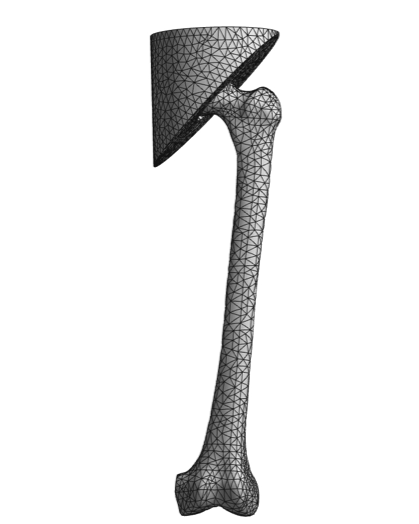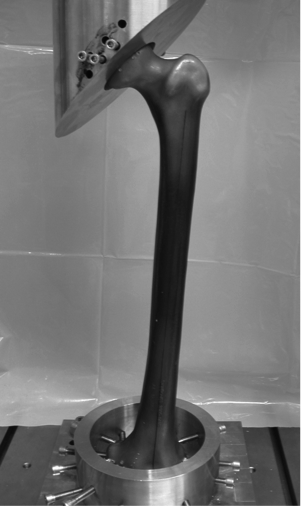Our research in this area has focused on the use of artificial composite bone analogues in conjunction with finite element analyses for evaluating the performance of orthopaedic implants. We have created a 3D model of the 3rd Generation Composite Femur from Pacific Research Laboratories with full muscle attachment data, and made it available for public download and use for research purposes at Biomedtown , provided that proper bibliographic reference is made in any resulting publications.

The model has been experimentally verified by comparison with experiments performed on cadaveric samples and on physical composite femurs:
Finite element model and verifying experimental setup.
Using these composite bones, we create and experimentally validate finite element models in order to evaluate the performance of existing orthopaedic implants, and for the future design of improved ones.




Most recently, our research is focusing on determining the biphasic poro-viscoelastic properties of engineered articular cartilage using finite element simulations of indentation experiments coupled to optimization algorithms.
Please see the publications tab at the top of the page for more information.

